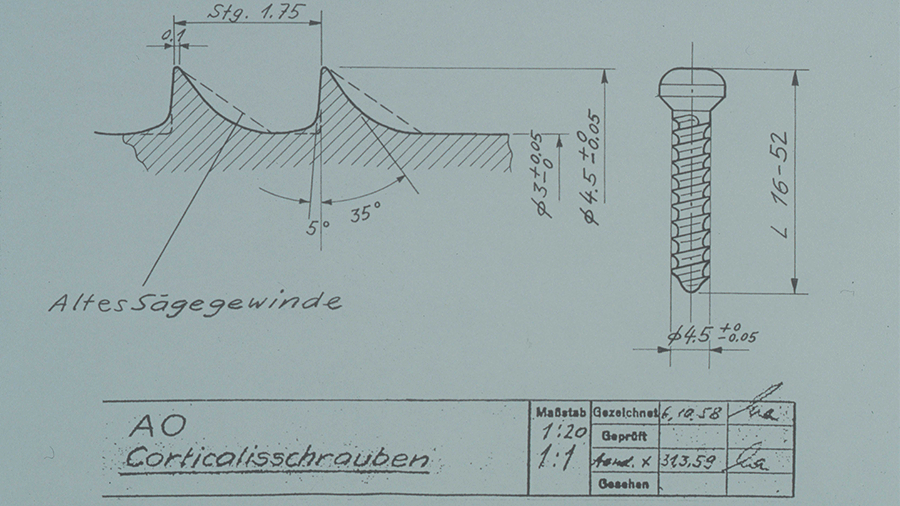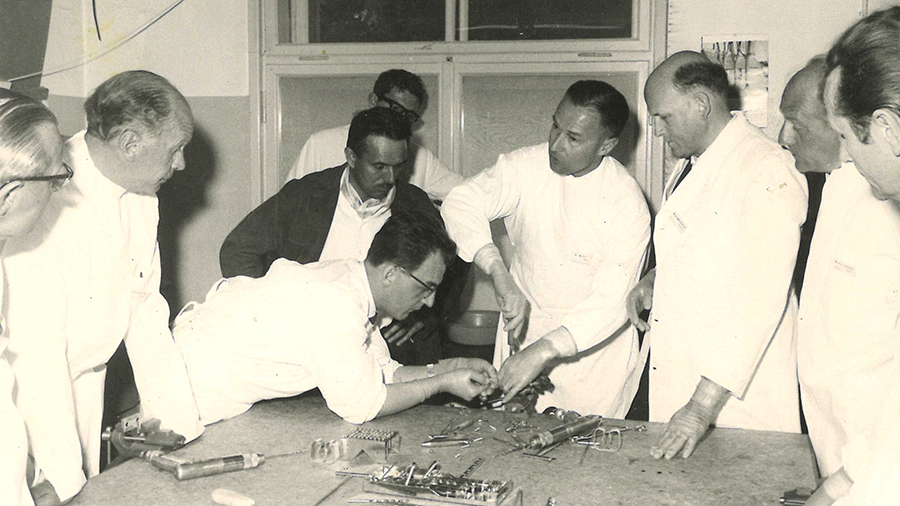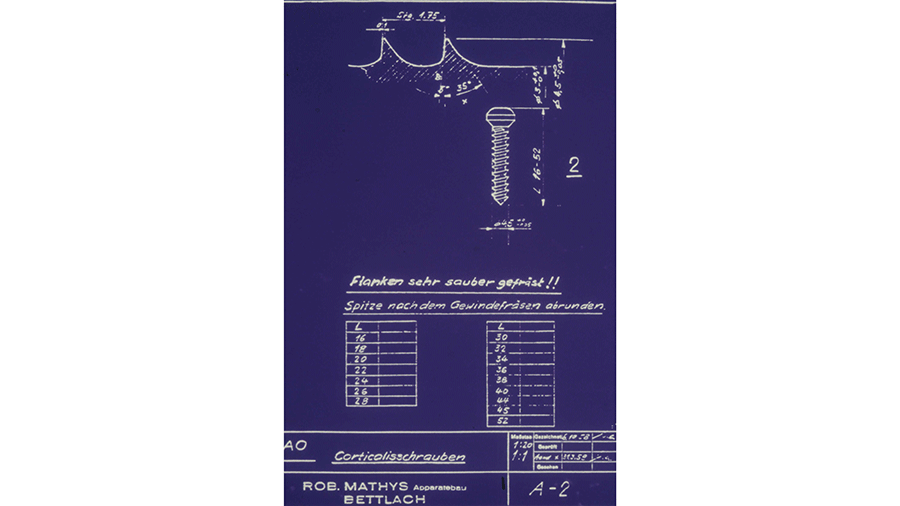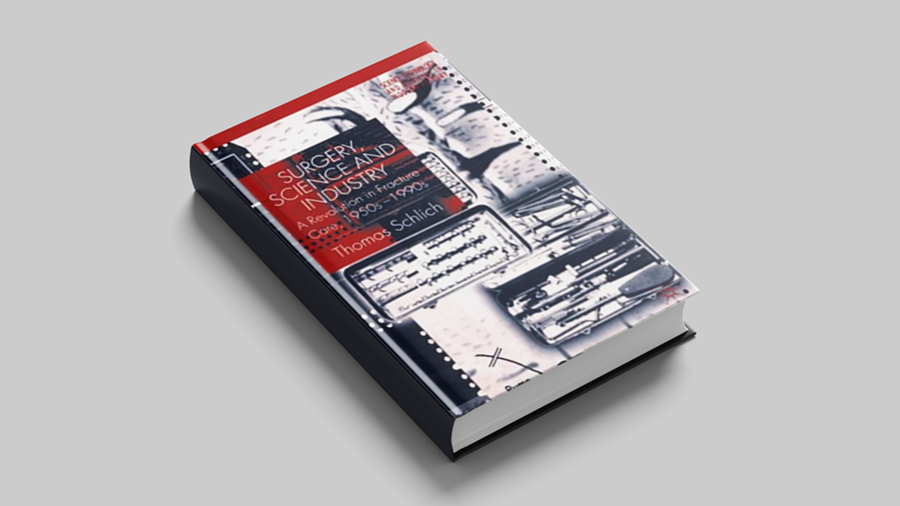Celebrating a milestone in the AO's history of innovation
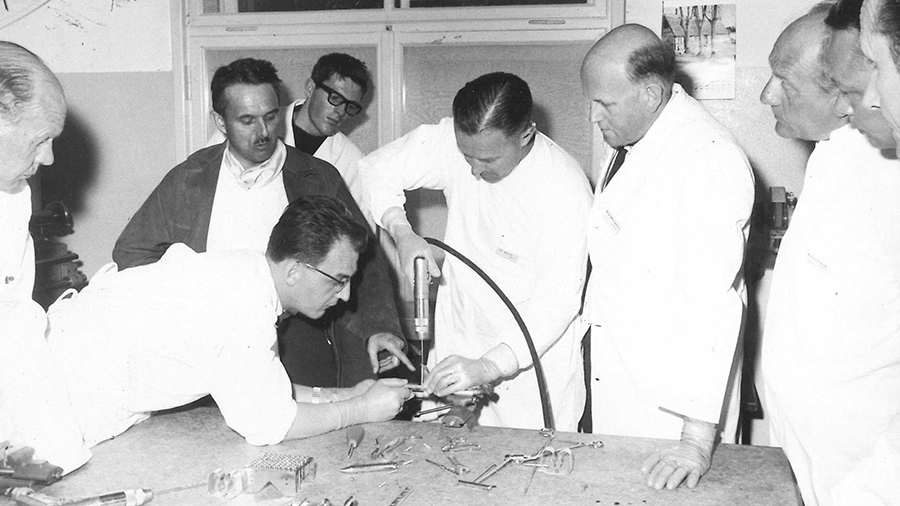
Today, the AO observes a milestone in its long history of innovation: On October 6, 1958, the AO cortex screw—based on a design by AO founder Maurice Müller and produced in just 8 days by engineer Robert Mathys—was fully realized. This ingenious innovation became a core piece of the AO Instrumentarium.
The AO cortex screw has a fascinating backstory. Müller had drafted a design for a new screw for use in solid cortical bone and—having heard that Mathys was an expert in constructing, designing, and machining stainless steel screws but had never produced for the medical industry before—he visited Mathys’ workshop in Bettlach, Switzerland, in the spring of 1958. Müller commissioned Mathys with the task to produce the new screw with a flat head and a recessed, hexagonal hole. Just 8 days later, Mathys came back to Müller with a first prototype. A fruitful collaboration quickly developed between the surgeon and the engineer and by October 6, the AO cortex screw was fully developed.
In his book, Surgery, Science and Industry – A revolution in Fracture Care, 1950s-1990s, Thomas Schlich explained the design and advantages of the screw. Published 20 years ago, the book is a treasure trove of information about the AO.


